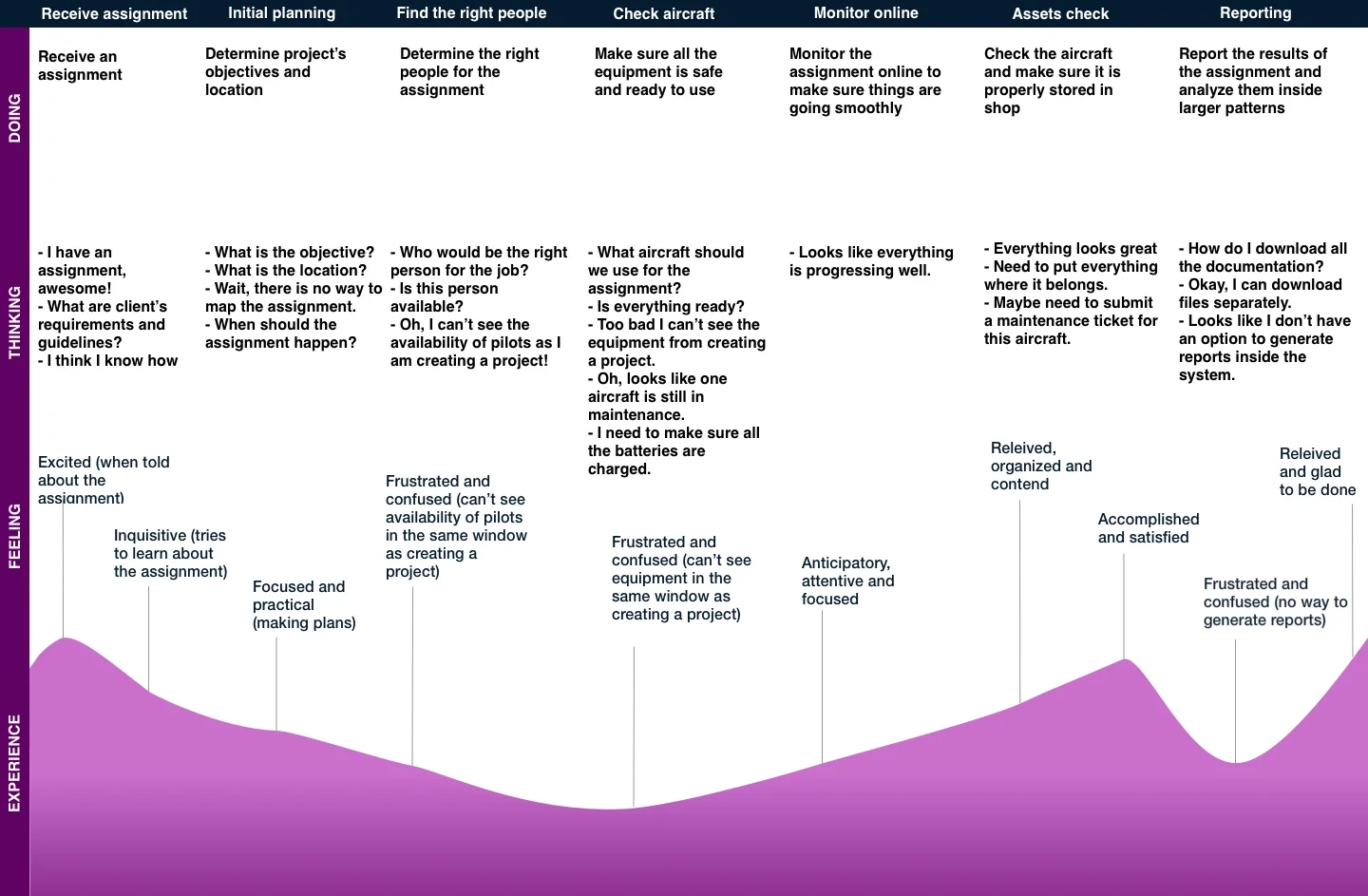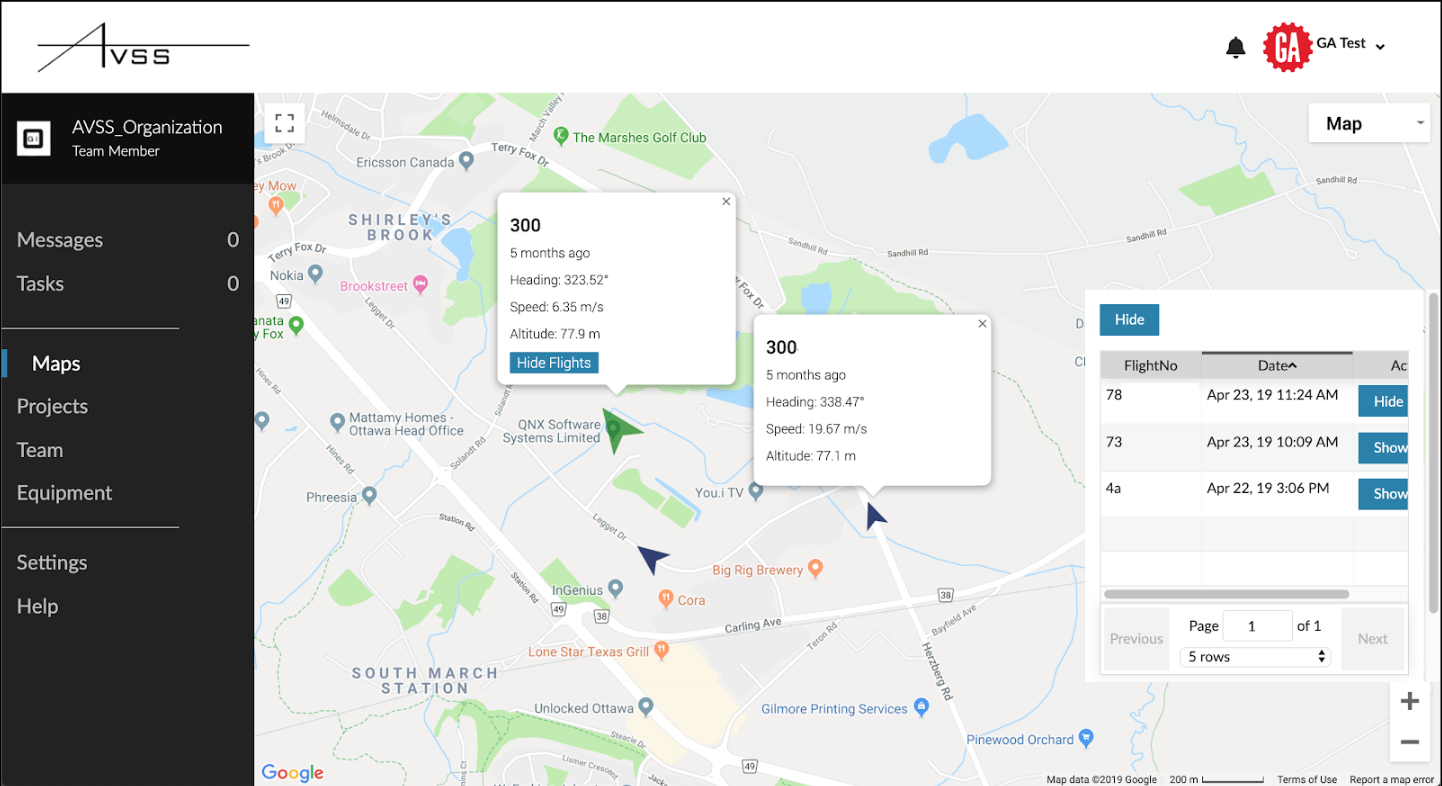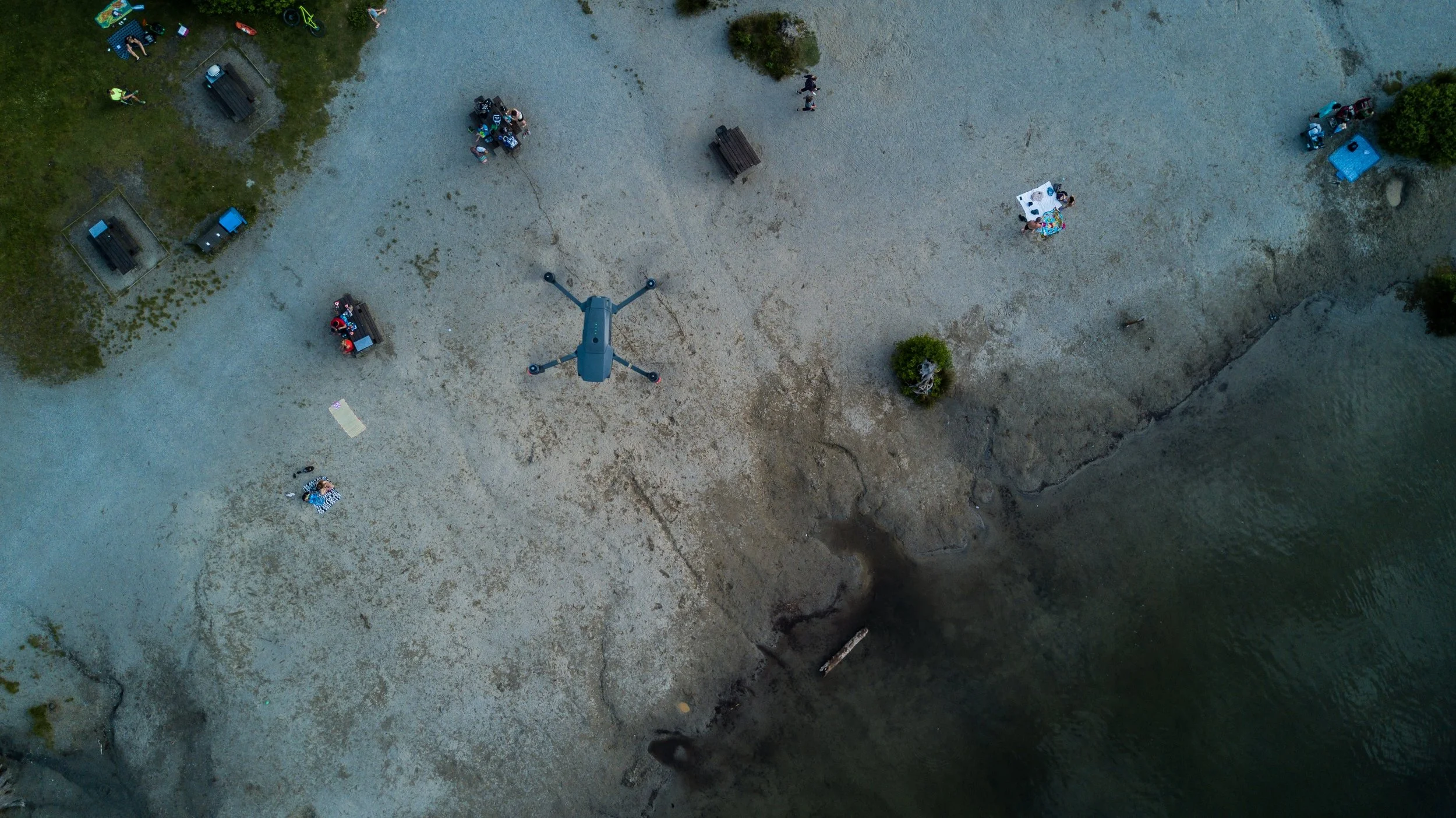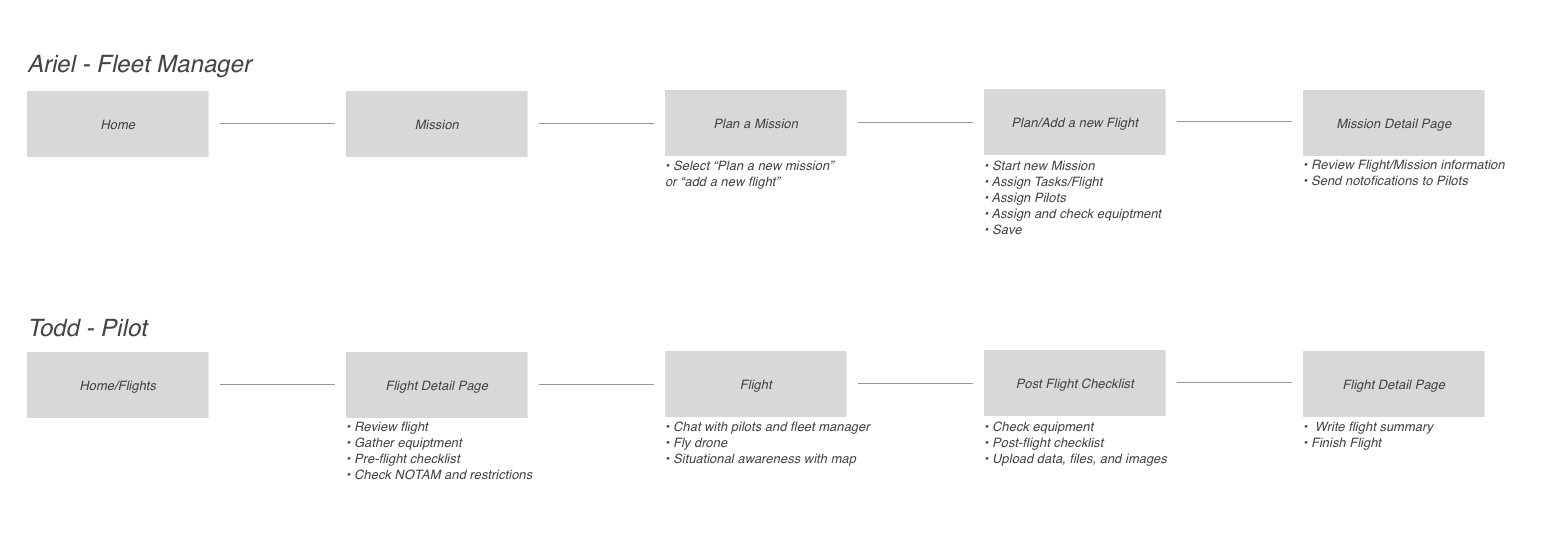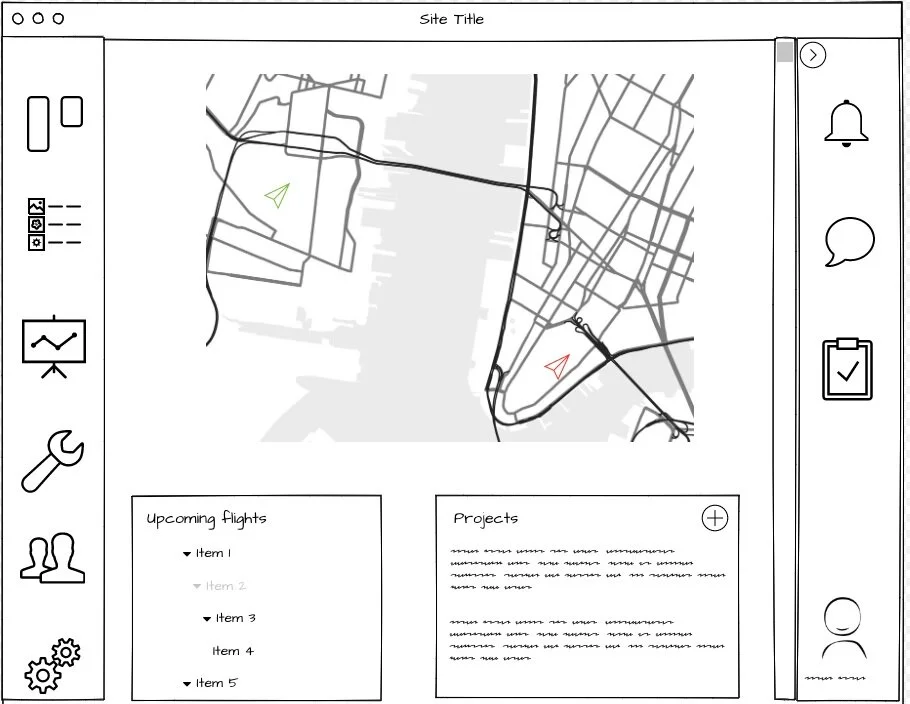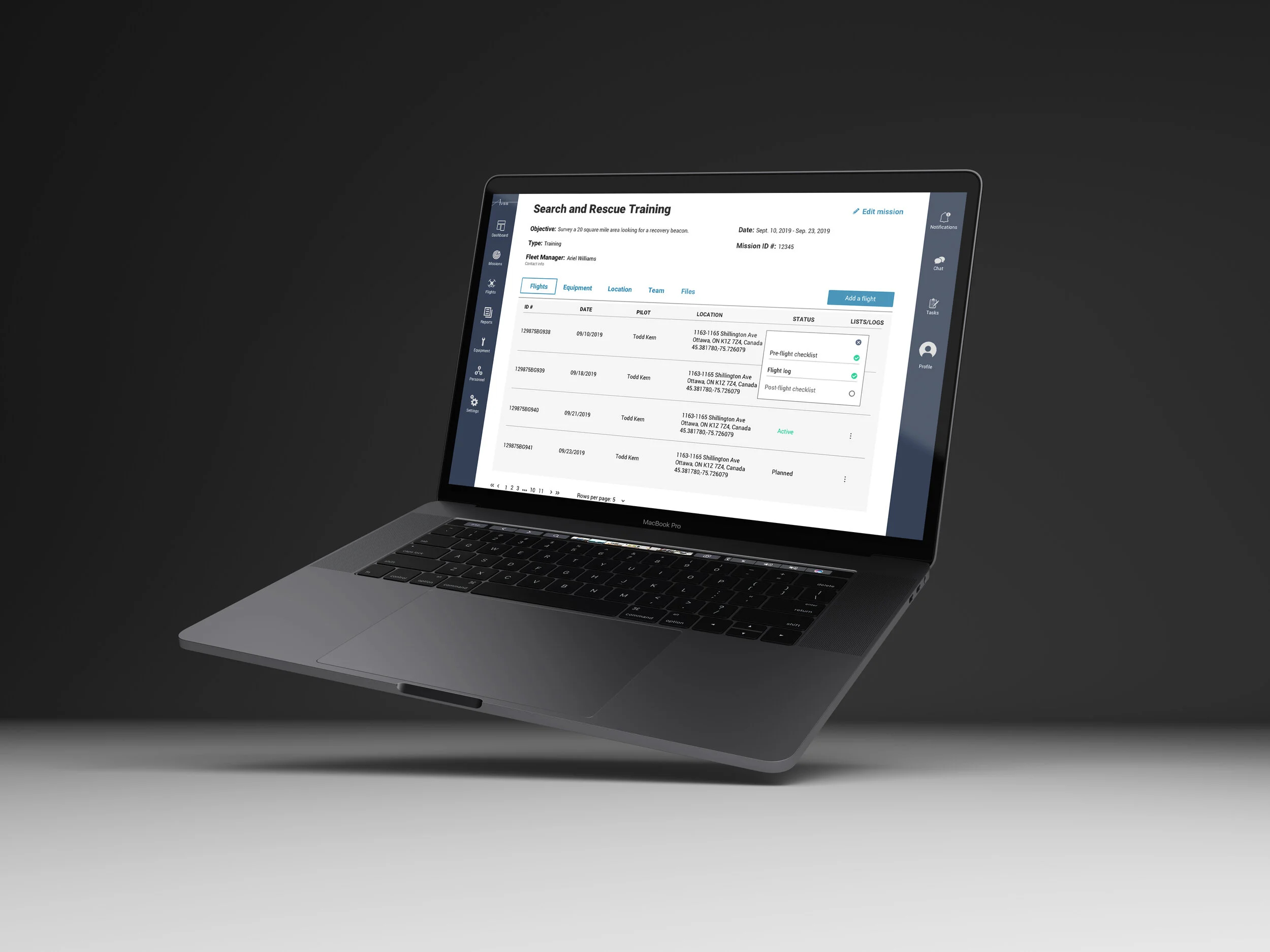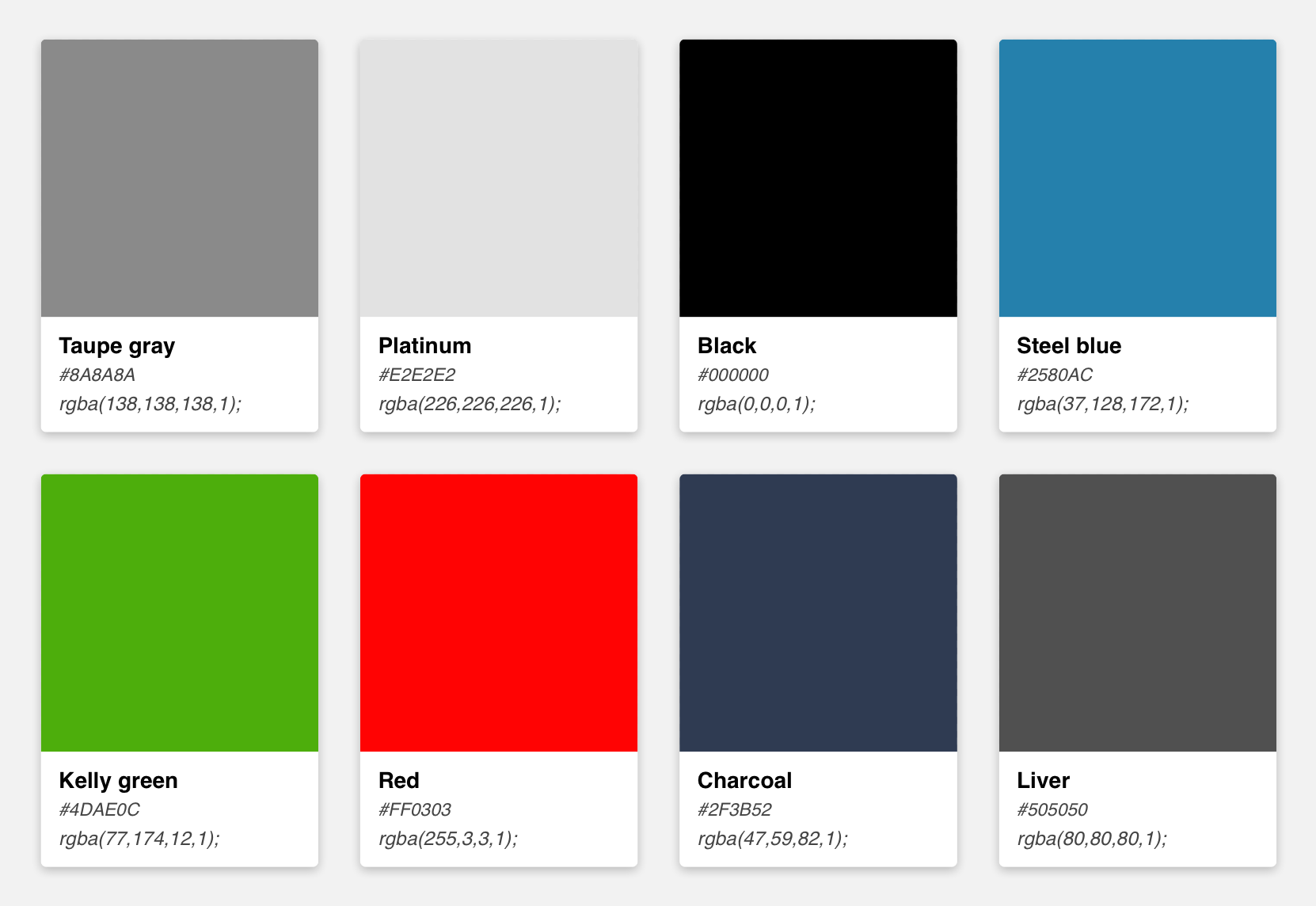AVSS
Command Center Redesign
AVSS - Aerial Vehicle Safety Solutions Inc.
AVSS develops end-to-end safety-related hardware and software for commercial drones. They are working on a drone recovery system that works in tandem with the Command Centre Platform Fleet Management Software.
“The purpose of a fleet management software is to save you time managing staff, improve profitability with efficiency, and ensure you are compliant with dynamic regulations.”
Brief: Assist the VP of operations with the updating the overall look and feel of the Command Center Software. It currently is in its MVP state. we are tasked to specifically focus on UX/UI improvements that will allow users to efficiently gather data and communicate cross-FUNCTIONALLY. We must also Consider how the Command Center will translate on a mobile-device for drone pilots.
Tools:
Sketch
Sketch Cloud
Treejack
XMind
Trello
InVision
Team:
Tissiana Alves
Maria Komarova
PJ Valenzuela
Liani Ware
Timeline:
3 Weeks
Role:
UX Researcher
UX Designer
Project Manager
Drones!
Working with our Canadian based client to improve the overall functionality of their current Command Center Software. The research phase took much longer than initially expected - we had to learn the ins and outs of drone software and fleet management softwares.
Since we are unfamiliar with fleet drone management, research is going to be crucial to this project. We started creating journey maps of a typical drone pilots and fleet managers in order to empathise with our target audience and main users.
What is the process of a Fleet Manager?
What does a Drone Pilot experience?
Creating journey maps were a essential part of understanding how fleet management softwares play a role with fleet managers and pilots.
Setting the Stage
In addition into creating journey maps for our two main users, in we fabricated a mission to walk our personas through. Our clients initially let us know they were looking to work with law enforcement and we used that information to create a mission.
Search and Rescue Training Mission
Survey a 20 square miles area looking for a recovery beacon
Use the chat function to prevent any in-air flight inaccuracies and communicate in real time.
Record all flight data including pre/post flight checklists, uploading necessary documentation and abide by all safety regulations.
After we were able to understand the fleet management and drone pilots journeys we then went into creating our personas.
Ariel the Multitasker
30, Fleet Manager
Goals:
Needs to manage a large search and rescue training operation
Plan when and where the flights will be taking and set tasks for the pilots
Deliver flight regulations and restrictions to pilots pre-flight
Pain Points:
Not being able to see all the data/equipment in one place
Cannot make several tasks within a project, and customize
No easy way to access previous flight history data
Goals:
Needs an easy way to record/upload/access certifications, flight history, flight maps, photos, pre-flight and post-flight checklists
Fly a UAV in a search and rescue test flight safley
Understand the flight requirements and tasks
Pain Points:
Having to manually input the data
Navigating AVSS Command Center out in the field
Miscommunication and insufficient detail from Command Center regarding the flight
Todd Drone Subject Matter Expert
28, UAV Pilot
“Mission planning should be handled with safety and efficiency at the forefront. Reactions to events should be planned well ahead of the flight through proper mission planning protocols and revision of proper emergency S.O.P’s relevant to the mission parameters and environment.”
Understanding the current system
After understanding the users for the Command Center we then did a heuristic evaluation on the Software.
First with no system administrative privileges, then once again after we were given full access.
Main Heuristic Pain Points:
Double click to access - When clicking on any information you were required to double click, this was a large pain point.
1 Project = 1 Flight - AVSS brought up this in our initial client call - they were unable to have multiple flights under a specific project.
Defaults to Map view - The default page was the Maps page which gave no visibility of system status.
Can not access all the needed information when planning a project - This allows no flexibility when navigating the site, and the information was buried within several screens
Only way to view flight routes is through the Map - The current tabs were Maps, Projects, Team and Equipment. When navigated to Projects you cannot see all flight history, only a select few.
Cannot track a UAV path - The current system is not intuitive for Fleet Managers to see a UAV flight path, they do not “connect the dots” between locations. There are only a few flight icons that were only accessible by double clicking on flights history then double clicking on the icon to see the “path”
Members cannot edit their own profile - If a member were to get a new certification, or update any files they themselves are unable to edit their own profile. They must go through a system administrator in order to do so.
Fleet managers and pilots need a better way to navigate the Command Center Software because the SaaS platform in its current state lacks information architecture, ease of communication, and visual hierarchy.
Solution
The Command Center Software’s navigation system will allow fleet managers and pilots to easily keep track of missions, flights and corresponding documents. The mobile version is catered to pilots to provide easier in-field access and allows pilots to live-stream their flights so fleet managers can monitor them from their desks.
Analyzing Competitors
KittyHawk
Skyward/Verizon
DJI
Consortiq
RMUS
Flytbase
DroneLogbook
When we compared other fleet and drone management softwares these were the common features across several different companies and softwares. Other companies that we assessed in addition to the ones above were RMUS, Flytbase, UASidekick, GeoTab, Fleetio and Hazon DMS.
After researching the competitors and what features they had implemented, we then focused on prioritizing features for the Command Center with the MOSCOW method.
We did minor features such as a weather module, easy to access chat functions and the drone flight path. We continued ideating and bringing in some interesting ideas such as auto flights, to technical ones such as 3D mapping functions. During this whole process we referred back from our user research and competitive analysis.
Information Architecture
Next was determining the organization of the Command Center’s information architecture.
First we did an open card sort with our internal team and created different naming conventions. After agreeing on common language naming conventions we did closed user card sorting in addition to using the Information Architecture website TreeJack to further validate our UX decisions.
TreeJack initial testing
User Flows
Once the websites organization and user flows were solidified - we then started navigation ideation as well as initial mobile ideation.
Ideating for mobile
Goals:
We wanted the mobile platform to be accessible by drone pilots in the field while focusing on the UAV.
Our sketches aimed to provide an easy way for pilots to navigate through to their required documents, and demonstrate live drone flying status.
Low to Hi-Fidelity Mobile Design
Final Command Center Designs
Reflection
Overall I am proud of the project we created for AVSS, it is an industry where we did not have any prior knowledge but we were able to adapt and use our resources to create an efficient design. In addition to a new industry, we had an added challenge of not being able to do testing with actual users, instead we had to make due with our classmates and a few local drone enthusiasts in our area. During the 3 weeks, we were able to consistently move forward in our designs even without all the necessary information.
Future iterations
Chat bar is static so you can see it, while not obstructing the view
Create more modules for the Dashboard
Build out more user flows
Test with UAV pilots and fleet managers
Filter and sort functions



